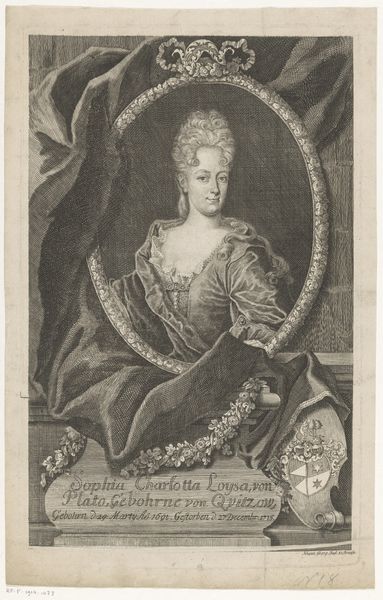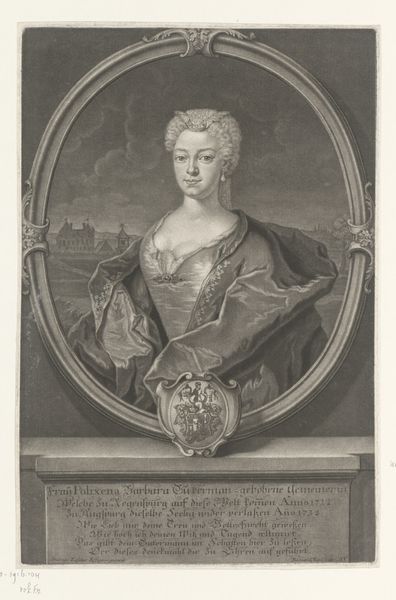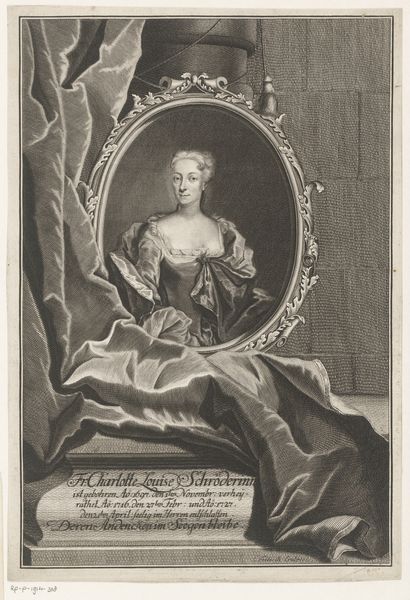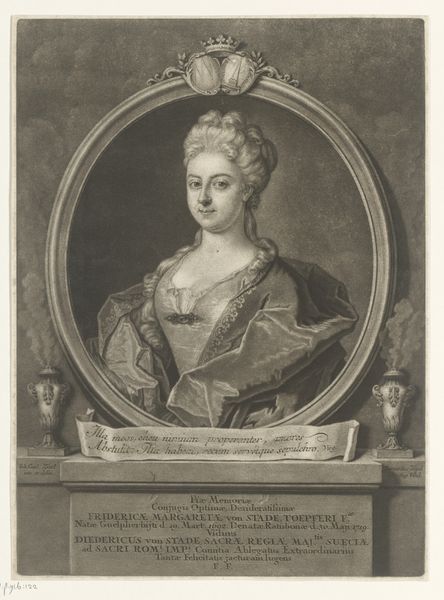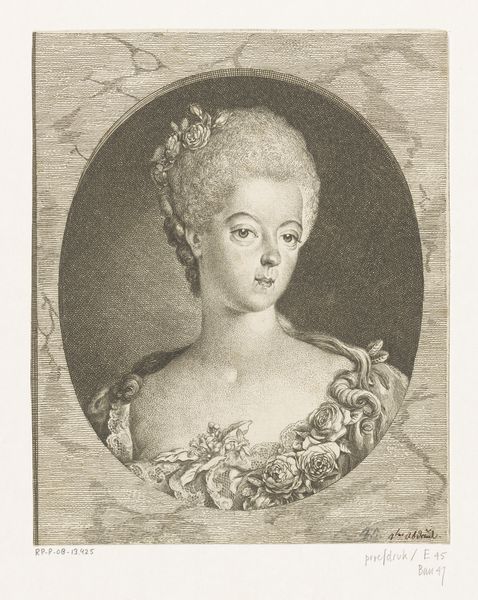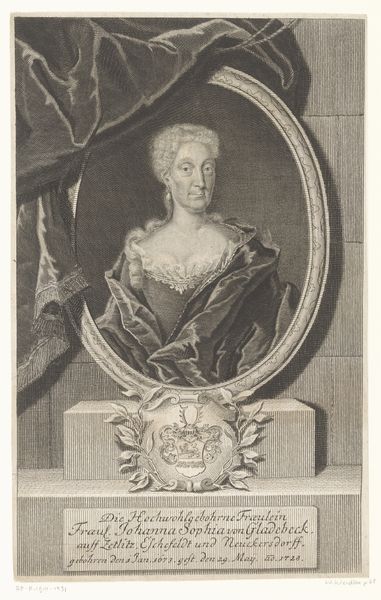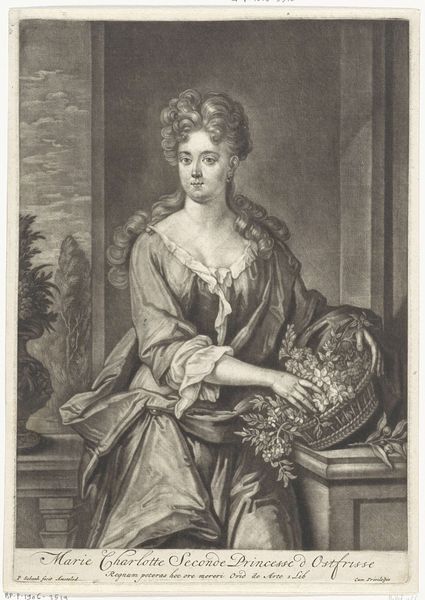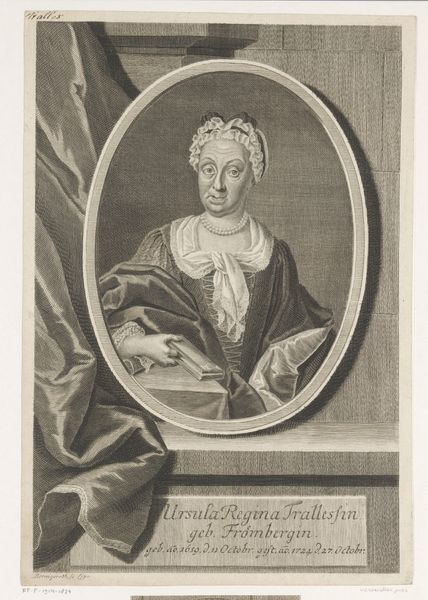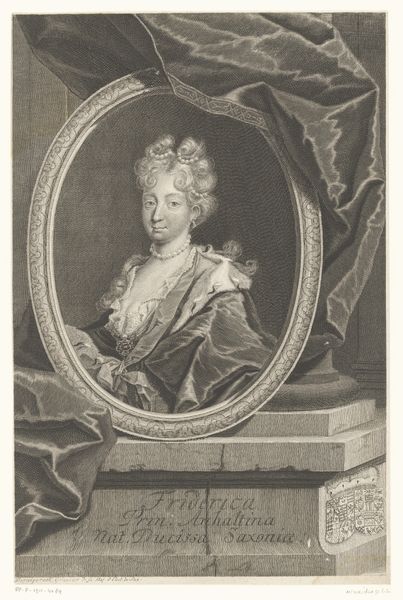
print, engraving
#
portrait
#
baroque
# print
#
genre-painting
#
history-painting
#
engraving
Dimensions: height 306 mm, width 198 mm
Copyright: Rijks Museum: Open Domain
Curator: Here we have Martin Bernigeroth's engraving of "Portret van Johanna Sophia Albrecht," dating sometime between 1717 and 1733. It's quite striking, isn't it? Editor: It's definitely got that austere Baroque formality. The heavy drapery and the framed portrait give it a real sense of weight, both physically and metaphorically. Curator: Exactly. Think of the engraving process itself. The meticulous labor involved in creating these fine lines on the metal plate, the sheer skill required to achieve such tonal variation. And prints like this served a vital role in disseminating images of power and prestige. Editor: The print medium also puts some distance between the woman and her viewer, doesn't it? Reproduction like this granted wider accessibility to her image while also reinforcing a carefully constructed public persona. And consider the power dynamic. Here we see not just a woman, but a representation of class and status, carefully mediated through artistic labor. Curator: And how these prints circulated—bought, sold, displayed in homes, even collected in albums. They acted as vital social currency. The paper stock itself would have been a carefully chosen material, indicative of quality. Editor: Precisely! The entire culture surrounding portraiture speaks volumes. Bernigeroth made a product intended to bolster the image of his subject, her family, their connections… What were the prevailing norms regarding women, social roles, patronage? It's not simply a likeness; it’s a calculated statement. Curator: And it goes beyond the surface representation. Think about the engraver’s role, reproducing existing painted portraits for wider circulation. It begs the question: how does the print market then impact or inform the process and reception of painting? Editor: Yes, that’s key. These aren't isolated images. They actively participate in the creation and maintenance of a complex social order. Curator: It's a testament to the power of print as a tool of dissemination. It is fascinating how it functions as both a form of artistic expression and an element within socio-political systems. Editor: Absolutely. Looking at this engraving invites us to peel back the layers of history, art, and social dynamics all captured in ink and paper.
Comments
No comments
Be the first to comment and join the conversation on the ultimate creative platform.


